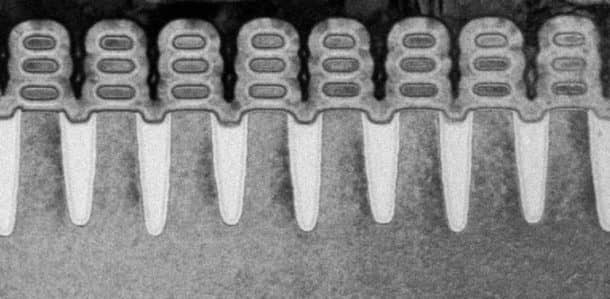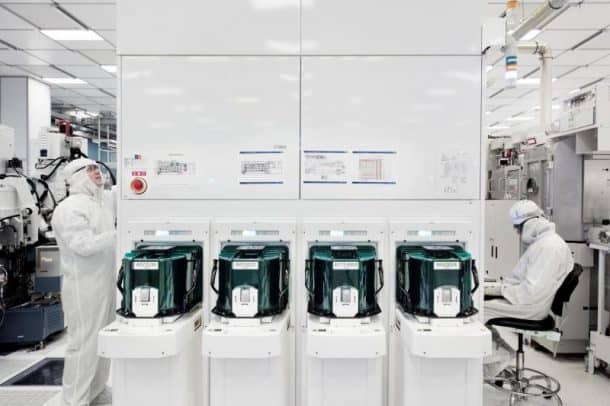World’s first digital computer spread over a room of 1,800 square feet and weighed 50 tons. Ever since then, the computers have grown smaller consistently proving the truth of Moore’s law which states that the number of transistors per square inch of a semiconductor chip will double every 18 months. Today, even children go around carrying tiny computers in their hands and Michigan Micro Mote, the smallest computer today measures only one cubic millimeter.
Of all the computer systems, the ones that affect everyone the most are smartphones. We want them to be smarter, slimmer, and sleeker and more importantly, a long lasting battery. The most advanced semiconductor technology today manufactures 10-nanometer processors but the leader of the tech, IBM is already delving into 5-nanometer chip processes that will incorporate 30 billion transistors on a single chip the size of a fingernail.

Credit: IBM
While most of the world feared the end of Moore’s law, IBM Research partnered with GLOBALFOUNDRIES and Samsung to create the smallest ever transistor changing some basics of chip assembly. The new process is called gate-all-around (GAA) switching from the vertical architecture to horizontal that uses stacks of silicon nanosheets to enable a fourth gate on the transistor.

Credit: Connie Zhou
The GAA process improves performance from the 10-nanometer technology by about 40 percent, consuming the same amount of power. If you were to design chips with the same performance as the 10-nm technology, the energy consumption would reduce by nearly 75 percent.
If that makes you think that your smartphones and laptops are about to get paper thin in the next few years, well, they are not. Before the technology moves its way from the research phase to commercialization, another decade or two will have passed. Mobile computing is about to get much more powerful in 10 to 15 years, but until then you can breathe in peace knowing Moore’s law is not dying.


